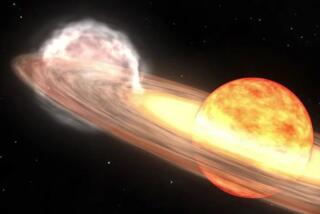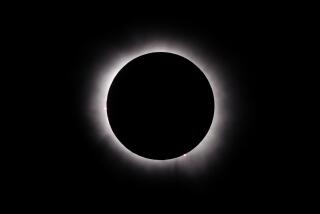Watch the Great American Eclipse live, right here
- Share via
The Great American Eclipse is finally upon us, and you can watch it live, right here.
For the first time in nearly a century, the shadow of the moon will race across the entire continental United States. The first piece of land to experience the total eclipse is near Lincoln City, Ore., where skies will grow dark at 10:15 a.m. local time, according to NASA. Then the darkness will travel southeast, tracing a path through Idaho, Montana, Wyoming, Nebraska, Kansas, Iowa, Missouri, Illinois, Kentucky, Tennessee, Georgia, North Carolina and South Carolina before hitting the water again somewhere off the coast of Charleston. That one-way trip will last 93 minutes, NASA says.
Even if you’re lucky enough to be in this so-called path of totality, darkness will last no more than a few minutes. (At the Point of Greatest Eclipse near Hopkinsville, Ky., the darkness will be over in 2 minutes and 41 seconds.)
If that’s just not enough time — or if you’re in a part of the country that won’t get completely dark — you’re in luck. NASA has your back.
The space agency is broadcasting live reports from Salem, Ore.; Idaho Falls, Idaho; Beatrice, Neb.; Jefferson City, Mo.; Carbondale, Ill.; Hopkinsville, Ky.; Clarksville, Tenn.; and Charleston, S.C.
You can also see the eclipse through the eyes of NASA’s satellites, telescopes, research aircraft and more than 50 high-altitude balloons. Even astronauts aboard the International Space Station are providing images for the show.
The program is also being broadcast right now in New York’s Times Square.
The show lasts four hours, but if you don’t have that kind of time, the animation above will show you where the moon’s shadow will fall and how the sun will look as the eclipse moves from west to east. The video, from NASA’s Scientific Visualization Studio, takes less than a minute to watch.
For a 360-degree view of the eclipse, check out NASA’s Facebook page. From 10:15 a.m. PDT to 1:15 p.m. PDT. NASA you can look up, down and all around at the progression of the eclipse as it occurs in Charleston, S.C.
Happy viewing!
Follow me on Twitter @LATkarenkaplan and “like” Los Angeles Times Science & Health on Facebook.
MORE ON THE GREAT AMERICAN ECLIPSE
Your solar eclipse checklist: What to look for on the big day
The Great American Eclipse: How to watch it safely
Will the Great American Eclipse make animals act strangely? Science says yes







